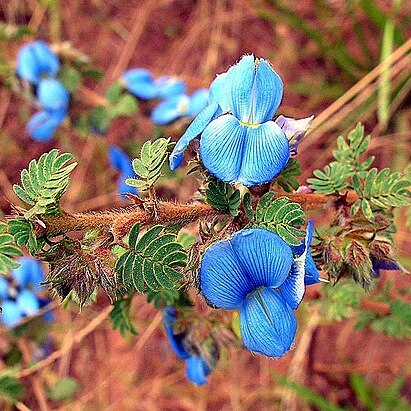Inflorescences mostly dense, less often 1–few-flowered, axillary or falsely terminal, ± scorpioid, often strobiliform, the flowers reflexed, arranged distichously, often with sterile bracts at the base; bracts entire, shorter than the flowers, scarious, striate, brownish and persistent; bracteoles free or connate, persistent, also scarious and striate.
Corolla small to medium-sized, white, yellow or blue; standard obovate or rounded, often emarginate, narrowed into a claw; wings elliptic or obovate, usually shortly spurred and with a series of small pockets, free; keel petals sometimes shortly spurred, shortly joined just below the apex.
Leaves pinnately 4–many-foliolate; leaflets alternate, asymmetric at the base, with several basal nerves, the main nerve usually submarginal; stipules not spurred below the base, persistent or soon falling; stipels absent.
Fruit stipitate, of 1–9 joints, if segments more than 1 then fruit folded like a concertina, enclosed in the calyx, the segments rounded, smooth, indehiscent, deciduous.
Calyx scarious, 5-lobed; tube short, the lower 3 lobes partly joined to form a lip, the upper pair usually almost completely joined to form a 2-fid lip.
Herbs, subshrubs or shrubs, rarely small trees, erect or sometimes ± spreading, the stems generally covered with tubercular-based often glandular hairs.
Ovary stipitate, linear, 2–9-ovuled; style inflexed, glabrous; stigma terminal, small.
Seeds reniform or depressed semi-globose; hilum minute, eccentric.
Stamens monadelphous; anthers uniform.
